Alphonse de Neuville (31st May 1835 – 18th May 1885), also known as Alphonse-Marie-Adolphe de Neuville, was a French academic painter who studied under Delacroix, famed for his dramatic scenes of contemporary wars and portraits of soldiers. But it’s his influential illustrations for Jules Verne’s Vingt mille lieues sous le mers (“Twenty Thousand Leagues under the Sea”) that will be of particular interest to downthetubes readers.
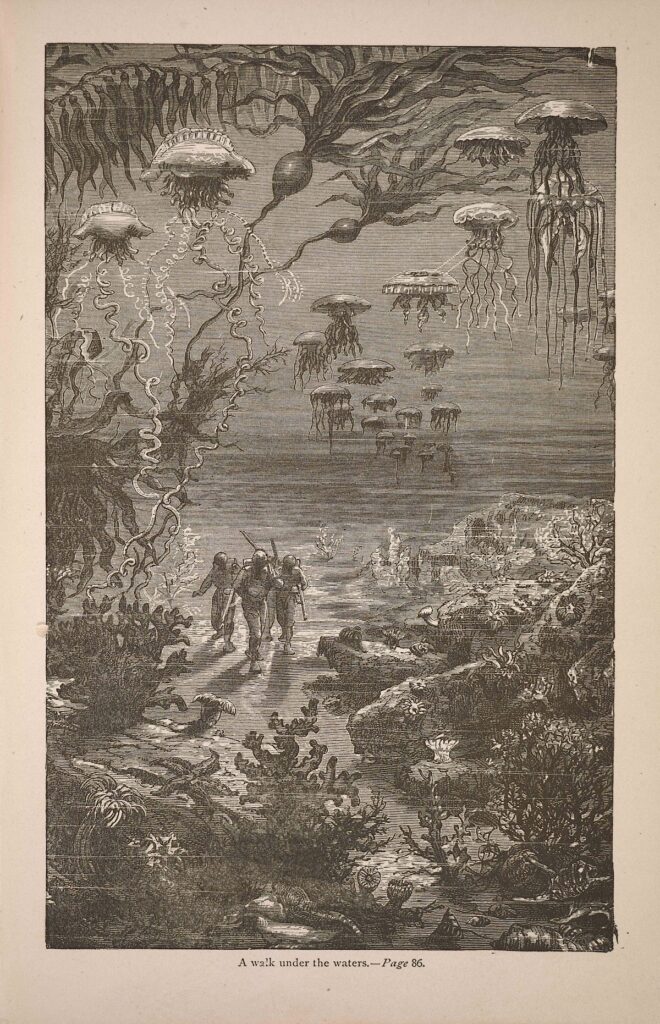
Twenty Thousand Leagues Under the Seas is considered a classic within its genres and world literature, originally serialised from March 1869 to June 1870 in Pierre-Jules Hetzel‘s French fortnightly periodical, the Magasin d’éducation et de récréation, published by Pierre-Jules Hetzel.
The series run in the magazine started in 1869, unillustrated; but Hetzel quickly recognised its potential as a book, especially with illustrations, and commissioned Alphonse de Neuville, Edouard Riou, and possibly a third artist to supply the pictures.
The book was published in 1871, with nearly 120 wood engravings.
It’s A deluxe octavo edition was first published in November 1871, and included 111 illustrations by Alphonse de Neuville and Édouard Riou, although some are unsigned, which has led to suggestions a third artist was involved; or that the named artists did not sign every illustration.
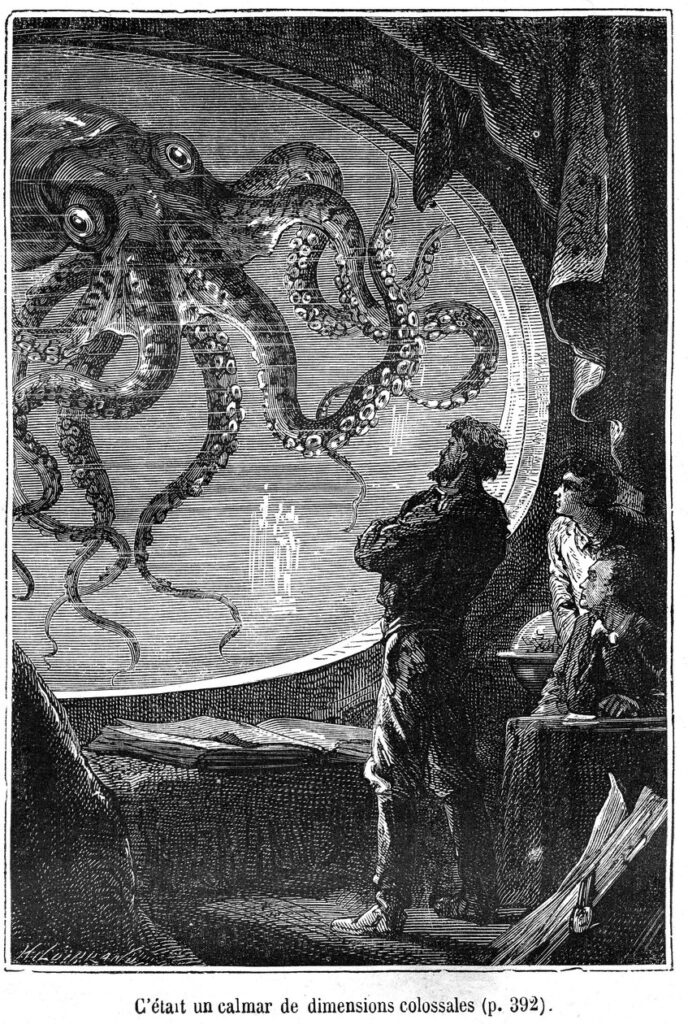
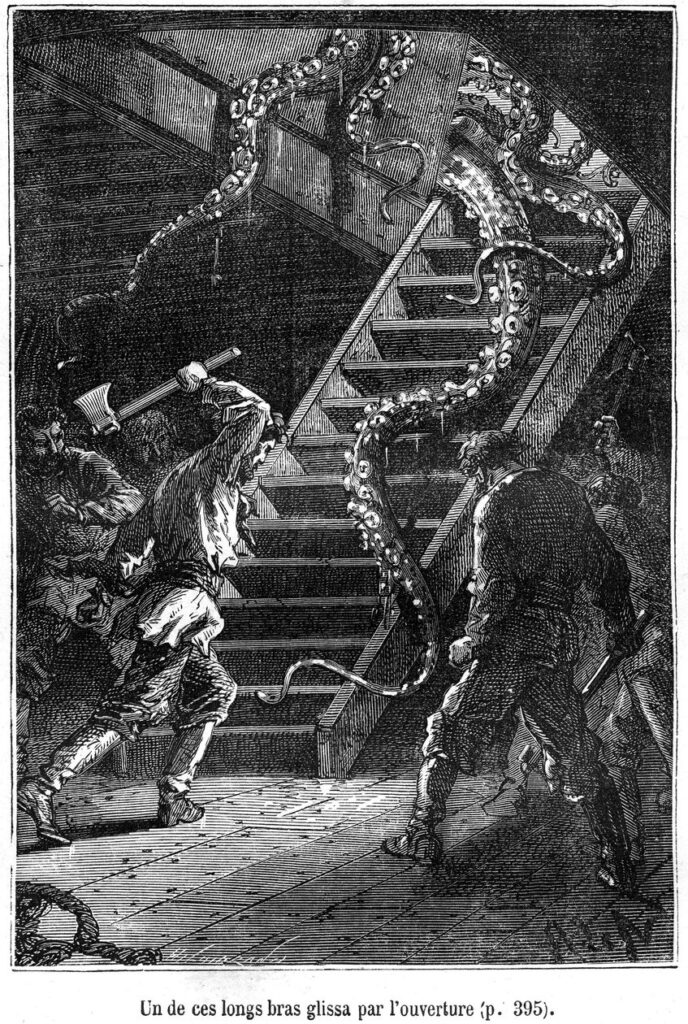
Widely acclaimed on its release, as it is today, through ayou can read an online version of the first edition of Twenty Thousand Leagues under the Sea thanks to the provided by the Bibliotheque nationale in Paris. It is regarded as one of the premier adventure novels and one of Verne’s greatest works, along with Around the World in Eighty Days, Journey to the Centre of the Earth, From the Earth to the Moon, and Michael Strogoff.
Its depiction of Captain Nemo’s submarine, Nautilus, is regarded as ahead of its time, as it accurately describes many features of modern submarines, which in the 1860s were comparatively primitive vessels. Verne was inspired by a model of the French submarine Plongeur, which he saw at the Exposition Universelle in 1867.
It should be noted that while it is the work of Alphonse de Neuville in the spotlight here, the illustrations provided by Edouard Riou for Verne’s book are just as gripping.
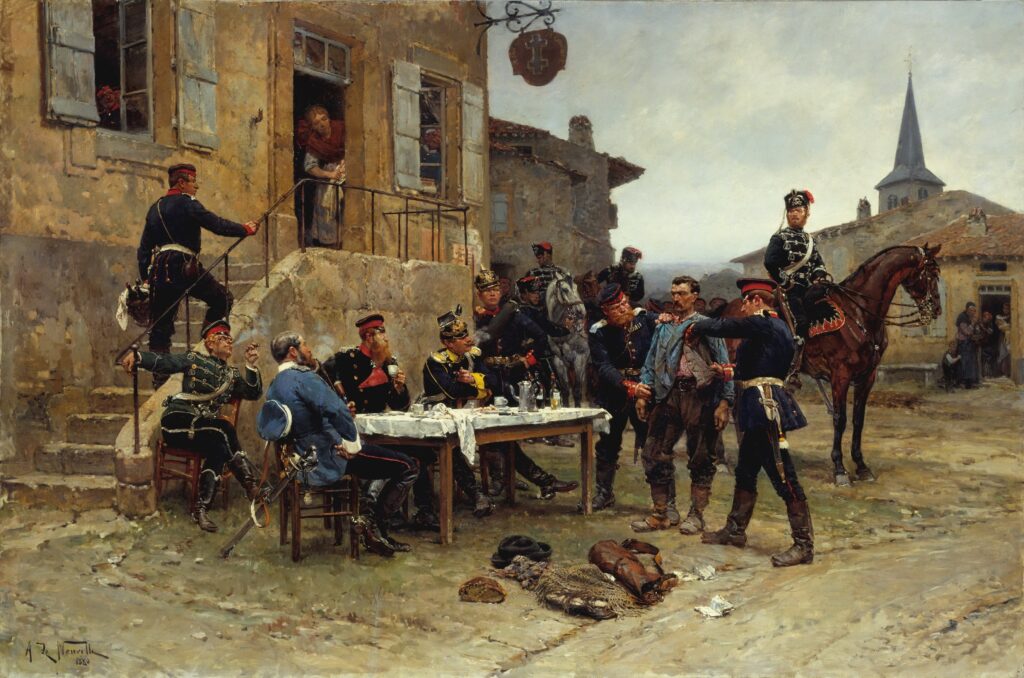
He also provided illustrations for Le Tour du monde, a French weekly travel journal first published in January 1860, also available to read online, Riou also a contributor; and François Guizot‘s L’Histoire de France (“History of France”), published between 1872 and 1876.
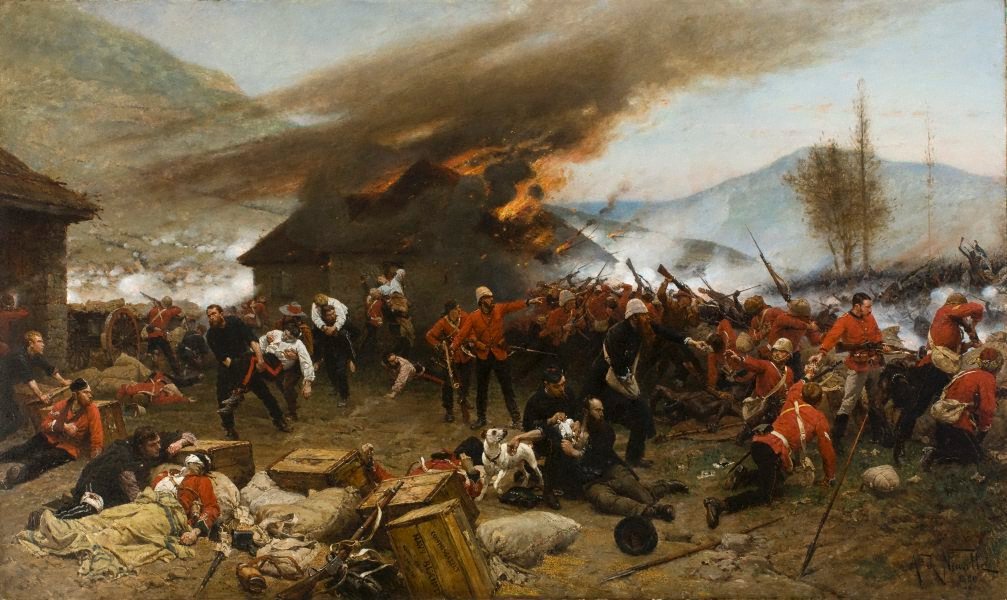

Alphonse de Neuville is widely regarded for his paintings depicting the Franco-Prussian War, the Crimean War, the Zulu War, and his portraits of soldiers. Some of his works have been collected by the Hermitage Museum in St. Petersburg and by the Metropolitan Museum in New York.
Head downthetubes for…
• Bibliotheque nationale: Twenty Thousand Leagues under the Sea first edition
• 20000 Lieues sous le Mers – Illustrated by Alphonse de Neuville and Edouard Riou (French Edition) | AmazonUK Affiliate Link
• Twenty Thousand Leagues Under the Seas, translated by F. P. Walter in 1991, made available by Project Gutenberg, illustrated by Milo Winter
• Wikipedia: Alphonse de Neuville
• Works by Alphonse-Marie-Adolphe de Neuville at Project Gutenberg
• Linda Hall Library: Scientist of the Day: Alphonse de Neuville
Categories: Art and Illustration, Books, downthetubes News, Other Worlds
 Chitty-Chitty-Bang-Bang’s illustrated story
Chitty-Chitty-Bang-Bang’s illustrated story  Doctor Strange by Paul Smith Artist’s Edition announced
Doctor Strange by Paul Smith Artist’s Edition announced  Terry Nation’s Rebecca’s World returns
Terry Nation’s Rebecca’s World returns  Costume Couture: Sixty Years of Cosprop exhibition opens in London
Costume Couture: Sixty Years of Cosprop exhibition opens in London
Thanks for this insight into a (to me) unfamiliar artist. Like all good articles it sent me off down multiple trails of enquiry. I was very glad to be introduced here to the painting ‘The Spy’. It makes sense I suppose that an artist who had illustrated fiction would be able to tell such a clear story with such vivid characters in a single image.
It also led me to wonder how many artists are known for both illustrating fiction and for ‘serious’ framed paintings. I love visiting galleries and especially those moments when you see a piece that you can’t easily walk away from. In this respect much contemporary art leaves me cold, except for, sometimes… the illustrations in graphic novels! I also love those moments where you don’t want to turn the page because the artwork demands attention.
It’s interesting to me what is deemed worthy of a place in an art gallery. There’s no question in my mind that, for example, frames from O’Neill’s work on early Nemesis books or Chris Ware’s frontispiece to Jimmy Corrigan or Bilquis Evely’s Supergirl art would be impossible for many gallery visitors to walk past.